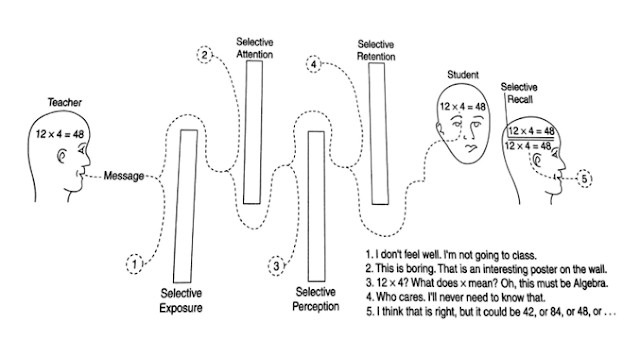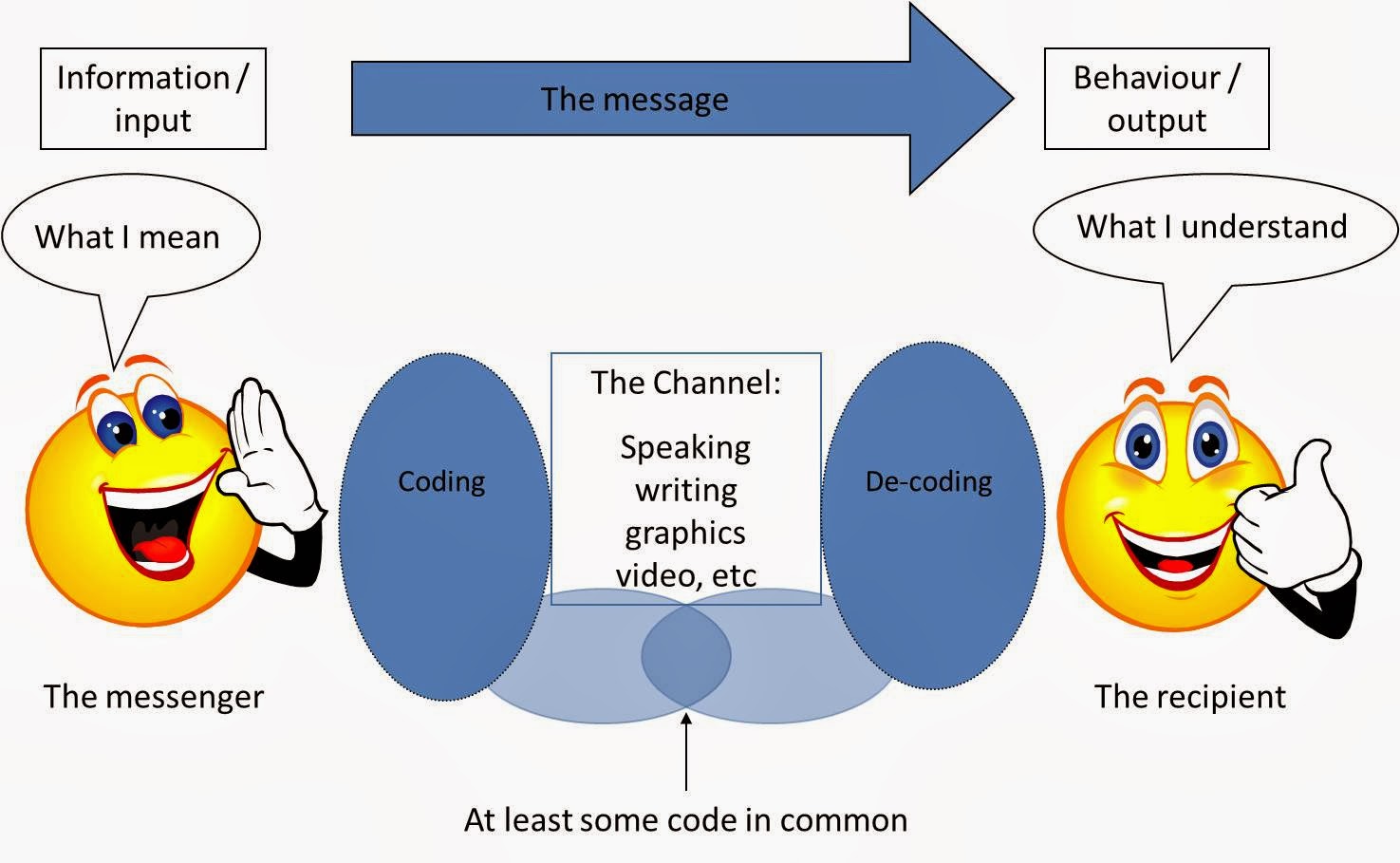SELECTIVITY AND COMMUNICATION BATTLE
Students learn what they choose to learn, not what teachers choose to teach. That means we need to figure out how to get them to choose to learn the same thing we choose to teach them. In the ‘selectivity battle’, the instructional goal will be missed if teachers fail to recognise or deal with that obstacle.
The four types of selectivity can directly interfere with initial learning:
- Selective exposure
- Selective attention
- Selective perception
- Selective retention
The fifth type of selectivity may occur even after initial learning:
5. Selective Recall
Selective Exposure:
It refers to a person’s conscious or unconscious decision to place her- or himself in a position to receive messages from a particular source. The teachers need to understand the factors that lead to exposure decisions.
- Attention Span
- Novelty
- Concreteness
- Size
- Duration
Selective Attention:
As the
old saying goes, you can bring a horse to water (selective exposure), but you
can’t make it drink (particular attention). Students cannot always control the
type of message they are exposed to from teachers. Hence, when exposed to
messages they would rather avoid, they may simply select to pay attention to
something else. In a nutshell, all
attention is selective. Everything that is happening in the classroom demands
their attention, and from which they select to whom they give more or less
importance. Many factors determine what the student will pay attention to:
- Proximity
- Involvement
- Utility
- Reinforcement
Selective Perception
Perception
is the process of ascribing meaning to messages. Messages don’t carry the
meaning; they stimulate the meaning. What meaning is stimulated is the function
of both the message and the receiver. Thus all perception is selective. Hence,
different receivers receive the same message but perceive different meanings-
according to their assigning of possible meaning. Several factors cause
misperceptions:
- Attention Span
- Novelty
- Concreteness
- Size
- Duration
Selective Retention
It may
be the problem that frustrates teachers the most. Students are present, they
pay attention, and through interaction with them, we know they perceive what
they were taught. But a few days (or sometimes minutes!) later, they seem never
to have heard of the ideas before.
Selective
retention refers to storing or not storing information in long-term memory.
Several factors are known to influence selective retention:
- Ambiguity of Messages
- Lack of Redundancy
- Lack of Schema
- Previous Experiences
- Expectancies and Biases
Selective Recall
Selective
retention and selective recall are often confused and sometimes thought to be
the same. In fact, they are quite different, though related. Selective
retention is about information storage, while selective recall involves
information retrieval. If information is not stored (retained) in the first
place, it cannot be retrieved (recalled) later. However,
the fact that something is retained does not necessarily mean it will be
recalled at any given time.



Comments
Post a Comment